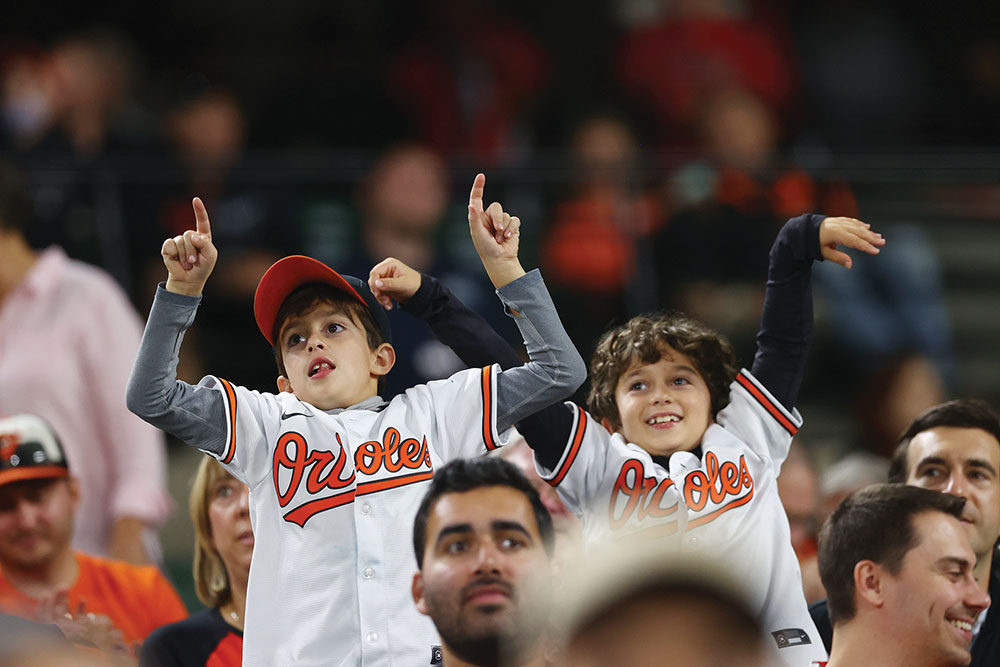There are the usual things one would expect to see in a classroom: Cubbies lining the wall with hanging backpacks, a stack of dictionaries atop a pile of board games, brightly colored rain boots sitting at the door. But the eye is immediately drawn to the life-sized Native American tent sitting in the center of the classroom. Beside it are hanging animal furs and a written list titled, “What We Know About the English Colonists in the New World.” Inside, children gather, creating the blueprints for their own Native American settlement they plan to sculpt out of clay.
 This is the third-grade classroom at The Park School in Baltimore, and like many third-graders around the area, these children are beginning to learn more about the world around them and how they can impact it. In the past few years, the academic expectations for third-graders have risen exponentially. Even a decade ago, third-graders were not learning as much as 8- and 9- year-olds are today, area educators say.
This is the third-grade classroom at The Park School in Baltimore, and like many third-graders around the area, these children are beginning to learn more about the world around them and how they can impact it. In the past few years, the academic expectations for third-graders have risen exponentially. Even a decade ago, third-graders were not learning as much as 8- and 9- year-olds are today, area educators say.
“The curriculum has definitely become more rigorous in the past few years,” says Debra Winson, principal of Mount Airy Elementary School. “Our math curriculum has changed the most. We have really downsized so they can go deeper into each subject. They have to be able to show and reason and sometimes pick more than one correct answer.”
What else is your average third-grader learning these days? In math, children are learning multiplication and division, how to solve three-digit equations and fractions. In reading and language arts, they are beginning to tackle novels and nonfiction. They are using textual evidence to support their findings and learning persuasive writing techniques. And in social studies, they are learning about Native Americans and U.S. history.
“Third-graders are developmentally expanding their knowledge, and typically in literacy we talk about transitioning from learning to read to reading to learn,” says Margarita Zisselsberger, assistant professor at Loyola University Maryland who teaches literary education to rising teachers. “They are curious about the world and how the world works. They have mastered how to decode and encode reading so that they are reading for more information and gathering facts and learning about how the world works.”
Of course, how third-graders are taught differs widely among schools. Many public schools, such as Mount Airy Elementary School, are more structured because of the strict enforcement of curriculum. At private schools such as Park, children are allowed a bit more creativity and flexibility in their learning style. However, the biggest challenge for all schools seems to remain the same: the rising prevalence of technology.
“They’re not as good at listening,” says Ellen Hoitsma, a third-grade teacher at Park. “Over my career, their attention span is shortening. I have to mix it up more. I am aware of how much time they spend on computers at home, and I think that this is influencing their ability to just seek information [with words].”
Students are coming in a lot more tech savvy, and that often means they expect a sense of immediate gratification, Winson agrees. “So, building stamina in reading and writing and being resilient is something that needs to happen. [It is] that kind of mindset that ‘I can do it’ and if I can’t do it yet, that I’ll be able to do it if I do this and this. It’s being able to set personal goals and then teachers having that persistence to create new expectations.”
This year, all students in Baltimore County’s public schools, from grades 1 to 12, have laptops they can use at school; middle and high schoolers are allowed to take their laptops home.
At Park, students meet for 45-minute periods with a tech teacher each week, and iPads are available in the classroom for research. Some teachers now encourage third-graders to complete writing projects on the computer, and at many public schools, assessments have moved off the page and onto the computer screen.
It is these tests that create the most tension between parents and teachers. At many schools, children aren’t graded until third grade, when state assessments — in Maryland, the PARCC — are first introduced. Because of this, the curriculum requirements increase, and the workload is heavier than ever.
“Third grade is intense,” says Leah Offutt, a third-grade teacher at Mount Airy Elementary School. “They had to learn all the hard stuff this year.”
But kids seem to rise to the challenge.
“At the beginning, writing is hard, and they know it,” says Offutt’s colleague, Mikayla Wesmiller, another third-grade teacher at Mount Airy. But by the time the kids are returning from winter break, the complaints die off, and the writing begins to expand, both in length and skill. Throughout this process, teachers say they try to make learning fun by introducing games and hands-on activities that enrich the learning process.
“Teachers are doing a really good job at learning how to differentiate, meaning they set out tasks with many entry points for different students so all students can participate and feel successful and learn,” Zisselberger says. “There is a lot of pressure for testing, and lots of people talk about state testing, but I think teachers have been smart to continue to do these sorts of practices that benefit everyone. They can be creative but also get at the learning that is tested. [The challenge] is to balance that need between helping them navigate the format of testing and what is test taking, and learning for life.”
At the end of each school year, Hoitsma ask her students what they most remember learning. “What they talk about are the projects that they initiated,” she says. “[It is about] all these little moments when things went wrong and things were hard, and they pushed through them. That’s what they remember most of all.”
Third grade is also a time when students are put in charge of their own belongings, including a take-home folder and long-term homework assignments. Kids learn too about being responsible citizens.
“Sustainability, global warming and climate change are very much on our minds,” Hoitsma says. “Last year’s class had a no-idling campaign and put some rules in place for carpool drivers and for our campus.”
Theirs is the “perfect age” to really make a difference within their family and the day-to-day life of school, she says.









